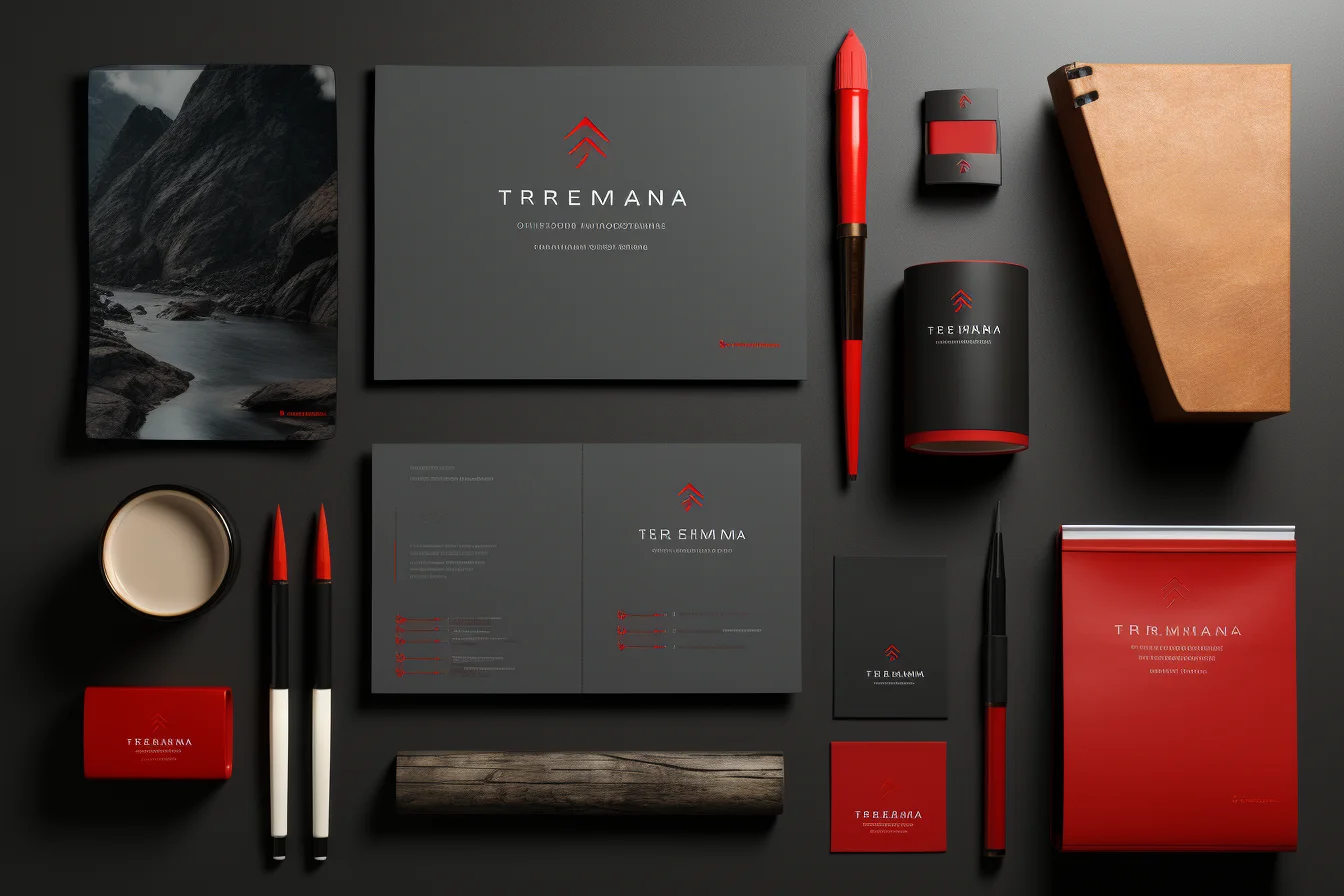Establishing a Base: Pre-Launch Stage
Establishing a brand is like putting in a building’s cornerstone, as it needs meticulous preparation, close attention to detail, and a distinct future vision. We will examine the fundamental components necessary for a successful brand launch. Setting the scene for long-term success requires taking careful consideration of every step, from developing your brand identity to comprehending your target demographic.

1) Developing Your Brand Identity
A solid identity is the foundation of any successful brand. In addition to the visual components like the logo, colors, and font, this also includes the brand’s mission, core values, and voice. It’s critical to clearly state your brand’s values and unique selling proposition before launch. Establishing a unified and genuine brand image that appeals to your target audience is made possible by carrying out a thorough brand identity exercise. Brand identity sets the tone of branding for the future so for launching a brand you should have a grip on the concepts of branding.
Learn more about the history of branding:
2) Market Research and Audience Analysis
Building a brand that resonates deeply with customers requires a thorough understanding of your target audience. You may learn about consumer preferences, behaviors, and pain areas by conducting market research. You can effectively reach and engage your ideal customers by segmenting your audience and developing thorough buyer personas that help you customize your messaging and positioning. Furthermore, competitive strategy analysis and market trend analysis offer insightful information for market positioning and differentiation.
3) Creating a Captivating Brand Story
Because people are story-lovers at heart, companies that can craft a gripping backstory for their goods or services will stand out from the competition. Your brand narrative needs to be sincere, moving, and representative of your goals and core principles. Telling a story connects emotionally with your audience and encourages brand loyalty, whether you’re tracing your business’s history, exhibiting customer endorsements, or presenting the journey of your founders.
Learn the art of storytelling in branding:

4) Creating a Consistent Brand Experience
In the eyes of consumers, consistency is essential to establishing confidence and trust. Every touchpoint—from your packaging and customer service to your website and social media accounts—should consistently convey your brand identity and messaging. By creating brand guidelines, you can make sure that every visual asset and communication follows the same style and voice. Maintaining consistency helps consumers remember brands and strengthens their opinion of their dependability and quality.
5) Developing a Powerful Brand Positioning
To stand out and attract customers in a crowded market, differentiation is crucial. Your brand positioning establishes the tone for your marketing initiatives and specifies how you want to be seen in comparison to rivals. You may carve out a distinct niche in the market by figuring out what makes your products or services distinctive and communicating their merits. A well-positioned brand speaks to your target audience’s needs and desires, which makes it interesting and appealing to them.

Strategic Planning and Execution
While establishing the base creates the framework, strategic planning is the road map for launching your brand. Every element is essential to guaranteeing a successful launch in the market, from defining precise goals to creating an all-encompassing marketing plan.
1) Setting Measurable Goals
Before starting any branding campaign, it’s critical to set quantifiable, well-defined goals. Setting clear, attainable, and time-bound goals gives you focus and accountability, whether you aim to expand into new markets, boost sales, or raise brand awareness. You can make sure that your brand launch initiatives contribute to the overall success of your organization by coordinating your aims with your overarching company objectives.
2) Formulating an All-Inclusive Marketing Plan
An efficient marketing strategy is the guide to building your brand and connecting with your target market. This entails figuring out which methods and channels—digital marketing, social media, influencer relationships, or traditional advertising—are best for connecting with and interacting with your target audience. Additionally, audience segmentation and messaging customization to appeal to various psychographics and demographics increase the effectiveness and relevancy of your marketing campaigns.
3) Building Excitement and Buzz
Getting customers interested in your brand launch requires building excitement and expectation. To create anticipation before the debut, use countdowns, sneak peeks, and teaser campaigns. A sense of anticipation is created by utilizing social media platforms, interacting with your audience through interactive material, and providing behind-the-scenes looks. Working with industry insiders or influencers can also help you become more credible and widely known while creating a buzz in the right circles.

Putting a Perfect Launch into Action: Launch Stage
1) Excellent Performance in Every Channel and Touchpoint
- All your brand’s interactions—whether they take place on social media, on your website, with customers, or in person—should be consistent with your values and brand identity.
- Every touchpoint, from the first announcement of your brand identity to continuing consumer encounters, needs to make a favorable impact on your target audience.
2) Making Certain That Every Interaction Has an Effect
- Every interaction your consumer has with your brand is an opportunity to make a lasting impression.
- Every interaction, whether it’s the initial one generated by your brand identification or the continuous one offered by your goods or services, ought to be thoughtfully designed to have a favorable effect.
- Retaining your brand identity and fostering audience trust may be achieved through maintaining consistency in messaging, visual branding, and customer experience across all touchpoints.
3) Brand Identity and Aesthetic Appeal are Reflected in the Packaging
- Customers frequently interact physically with your brand’s products for the first time through the packaging.
- It should be visually appealing and distinctive in addition to reflecting the identity and values of your brand.
- Well-thought-out packaging can raise the perceived worth of your goods and leave a favorable impression that lasts after the customer makes their purchase.
Read the role of Aesthetics in Branding:

4) Website Mobile Device Optimization
- It is imperative to have a website that is optimized for mobile devices due to the rising trend of mobile usage.
- Visitors visiting your website on smartphones and tablets will have a seamless and intuitive experience if it is optimized for mobile devices.
- In the end, mobile optimization drives the success of your brand launch by increasing accessibility, boosting user engagement, and assisting in increased conversion rates.
Post-Launch Momentum: Post-Launch Stage
1) Sustaining Initial Launch Momentum
To promote ongoing development and engagement, the momentum created during the initial launch period should be maintained and capitalized on. This entails being engaged on social media, building rapport with clients via tailored messaging and loyalty schemes, and continuously providing value through your goods and services. In addition, asking for and implementing consumer feedback into upcoming versions shows a dedication to both client happiness and ongoing development.
2) Regular Social Media Presence
Social media sites are a great way to stay in touch with your audience. Maintaining a high profile for your brand may be achieved by offering pertinent material, engaging with followers, and posting updates frequently. Additionally, it gives you the chance to communicate with your followers in both directions, which enables you to get feedback, solve issues, and build a sense of community.
Uncover the significance of social Media in making your brand successful:
3) Establishing rapport with Tailored Messaging
Good client relationships depend on effective communication. It shows that you are paying attention and that you understand them when you modify your messaging to fit their unique wants, preferences, and pain areas. Demonstrating to your clients that you appreciate their uniqueness and are dedicated to fulfilling their needs, whether by customized emails, targeted promotions, or considerate answers to questions, builds client trust and loyalty.
4) Putting Loyalty Schemes into Practice
Loyalty programs are an effective way to encourage recurring business and cultivate client loyalty. Rewarding loyal consumers with prizes, deals, or special benefits not only promotes ongoing interaction but also helps them feel valued and appreciated. By rewarding loyalty, you strengthen the emotional bond that exists between your brand and your customers and promote positive behaviors.
5) Continuous Value Provision
Maintaining clients and promoting repeat business depends on your products and services offering continuous value. This could be releasing updated or new features for the product, providing more services or resources, or providing top-notch customer support. Long-term success is fueled by a constant pursuit of exceeding customer expectations, which strengthens customer happiness and loyalty.

Brand Positioning and Differentiation (Major Component of Branding)
A distinct and appealing brand identity is necessary to stand out from the competition in today’s cutthroat market and grab consumers’ attention. Effective communication of your brand’s unique value proposition and identification of your unique selling point are two areas where strategic positioning is crucial for success.
1) Determining Your Unique Value Proposition
A thorough grasp of your unique value proposition (UVP) is essential to developing an effective brand positioning strategy. Your value proposition (UVP) summarizes how your company differs from the competition and explains why customers should pick your goods or services over rivals. This could depend on elements like pricing, customer service, innovation, and product quality. Performing a comprehensive examination of your market and competitive environments facilitates the identification of potential areas of differentiation and shapes your positioning approach.
Here are some points to keep in mind when thinking about the unique value proposition:
i) Strengths and Weaknesses of Your Brand:
You can start with a SWOT analysis in which you will identify your brand’s strengths, weaknesses, opportunities, and threats. This will help you in better assessing your brand’s strengths and flaws in comparison to competitors.
ii) Analyzing the Competitive Landscape:
Research your competitors to better understand their strengths, limitations, and market positioning. Identify gaps or places where competitors may be undeserving clients, which could lead to possibilities for differentiation.
iii) Understanding Customer Needs and Pain Points:
Conduct market research to learn about customers’ needs, preferences, and pain points. Identify unmet needs or areas where customers are dissatisfied with existing solutions since these are potential opportunities to add value and differentiate your business.
iv) Define Your USP:
Define your unique selling proposition (USP) after examining your brand, competition, and target market. This is the single most compelling feature that distinguishes your brand from competitors and appeals to your target audience. Your unique selling point should be clear, simple, and easy to grasp, as well as solve a specific customer need or problem area.
v) Articulating Your Value Proposition:
Once you’ve found your USP, express it in a way that highlights the distinct benefits and advantages of using your brand. Your value proposition should clearly describe what distinguishes your brand, why it is important to customers, and how it solves problems or meets their needs better than competitors.
vi) Testing and Refining Your Value Proposition:
Run your value proposition by targeting clients to collect feedback and evaluate its effectiveness. Surveys, focus groups, or A/B testing can be used to gauge client feedback and make necessary improvements. Your value offer should adapt in response to consumer feedback and market trends.

2) Creating an Engaging Brand Story
As we talked above about creating captivating stories for launching a brand, let’s investigate in more detail how this story creation thing helps in brand positioning.
A strong brand narrative lays the groundwork for effective brand positioning by succinctly communicating your company’s mission, core values, and promise. Your target audience’s goals and values should be reflected in your brand narrative, which should also arouse emotion and motivate action. Building a coherent and genuine brand narrative strengthens brand loyalty by forging a deep emotional connection with customers through storytelling, visual imagery, or experiential marketing.
Discover Other factors that evoke emotion in people about your brand:
Some Important points to keep in mind when creating an engaging brand story are
i) Comprehending the Power of Storytelling:
Stories elicit a response in humans due to their inherent wiring. Narratives arouse feelings, establish bonds, and enhance recall of facts. You may explain your company’s beliefs, mission, and personality in a way that connects with your audience emotionally by creating an engaging brand narrative.
ii) Finding the Story Behind Your Brand:
Every brand has a backstory. It might be the narrative of the brand’s establishment, the source of inspiration for its goods or services, or the experiences of its creators. Determine the distinctive facets of your brand’s mission, beliefs, and history that can be incorporated into an engaging tale.
iii) Identifying the Personality of Your Brand:
Brands have personalities just like people do. Think about the qualities and attributes that characterize the personality of your brand, such as its inventive and cutting-edge nature, serious and professional demeanor, or humorous and joyful nature. The personality of your brand should be reflected in and reinforced by your brand narrative, ensuring consistency across all touchpoints.
iv) Linking with Your Audience’s Emotions:
An engaging brand story evokes feelings of happiness, fondness, inspiration, or aspiration in your audience. Make sure your story reflects the feelings you want your brand to arouse in the eyes of your target audience. Bring your brand narrative to life by using storytelling strategies like vivid imagery, relevant characters, and captivating anecdotes.
v) Aligning with Your Brand’s Mission and Values:
The values and mission of your company should be reflected in your brand narrative. Think about how your brand’s narrative embodies its main values, tenets, and goals. An audience will be more receptive to your message and more likely to trust you if your brand narrative and values are strongly aligned.

3) Determining the Needs and Interests of Your Target Audience
Understanding the needs, tastes, and aspirations of your target customer is crucial for effective brand positioning. By segmenting your audience based on demographic, psychographic, and behavioral characteristics, you can adapt your messaging and positioning to appeal to specific consumer groups. Furthermore, performing market research and obtaining customer insights allows you to predict changing trends and adjust your positioning approach accordingly.
4) Communicating the Differentiation Points
Effectively communicating your areas of uniqueness is crucial after you’ve determined your distinctive value proposition and created a captivating brand narrative. Emphasize the salient characteristics, advantages, and qualities that distinguish your brand from rivals and appeal to your intended market. Consistency in branding and messaging, whether it be on your website, in advertising campaigns, on packaging, or in social media material, strengthens the uniqueness of your brand and gradually increases brand equity.
5) Keeping Things Aligned and Consistent
Maintaining a Strong Brand Positioning and Differentiation Strategy Requires Consistency and Alignment. Make sure that all your consumer touchpoints—from your website and social media accounts to your physical stores and customer service encounters—have the same messaging, visual identity, and brand experiences. Additionally, if your brand positioning is in line with your overall business strategy and values, it will be more credible and authentic, which will win over customers’ trust and loyalty.
know the role of cohesive brand experience:

Ongoing Brand Management and Evolution Throughout
Let’s now explore the vital facets of continuous brand evolution and management. Developing a strong brand is an ongoing process that calls for continual attention, innovation, and adaptation. This section will cover tactics for keeping an eye on brand performance, being flexible and adaptable, encouraging creativity, interacting with your target market, and preserving brand consistency over time.
1) Monitoring Brand Performance Metrics
Regular monitoring of key brand performance metrics is essential for evaluating the effectiveness of your branding efforts and identifying areas for improvement. This includes tracking metrics such as brand awareness, brand perception, customer satisfaction, and market share. Utilize tools like surveys, focus groups, and social media listening to gather valuable feedback from customers and stakeholders, enabling you to make data-driven decisions and optimizations to enhance your brand’s performance.
2) Remaining Flexible and Adaptive
Being flexible and adaptable is essential to remain ahead of the curve in the quickly evolving corporate environment of today. Keep an eye on customer behavior, market developments, and the competitive environment to spot new possibilities and dangers. Remain flexible and sensitive to the shifting needs of the market and be ready to adjust your messaging and brand strategy as necessary. You may stay relevant and connect with your target audience by keeping an eye on consumer preferences and market trends.
3) Encouraging Innovation and Evolution
Dynamic, ever-evolving brands are not static; rather, they change and adapt with time. Adopt a culture of experimentation and innovation to keep ahead of the competition and satisfy changing customer demands. To stay current and set your brand apart from competitors, invest in R&D, new product development, and improved services. You can guarantee long-term success and future-proof your brand by consistently inventing and adapting.

4) Engaging with Your Audience
Building meaningful relationships with your audience is essential for fostering brand loyalty and advocacy. Engage with your customers through social media, email newsletters, events, and community initiatives to foster a sense of belonging and connection. Solicit feedback, respond to inquiries promptly, and show appreciation for customer support to cultivate a loyal fan base that advocates for your brand.
5) Maintaining Brand Consistency
While evolution and adaptation are essential for staying relevant, maintaining brand consistency is equally important for preserving brand equity and recognition. Ensure that your brand identity, messaging, and values remain consistent across all touchpoints and channels, reinforcing brand recall and trust among consumers. Periodically review and update brand guidelines to accommodate changes while staying true to your brand essence.
In this article, we’ve examined the key components of ongoing brand evolution and management. The long-term success and sustainability of your brand may be ensured by monitoring its performance, staying adaptive and flexible, promoting innovation, engaging with your audience, and maintaining brand consistency throughout time. Creating a successful brand is a continuous process that requires vision, dedication, and a thorough understanding of the dynamics of your target market. We hope your branding efforts continue to bear fruit and appreciate you joining us as we lead you through the essential elements of a successful brand launch.



